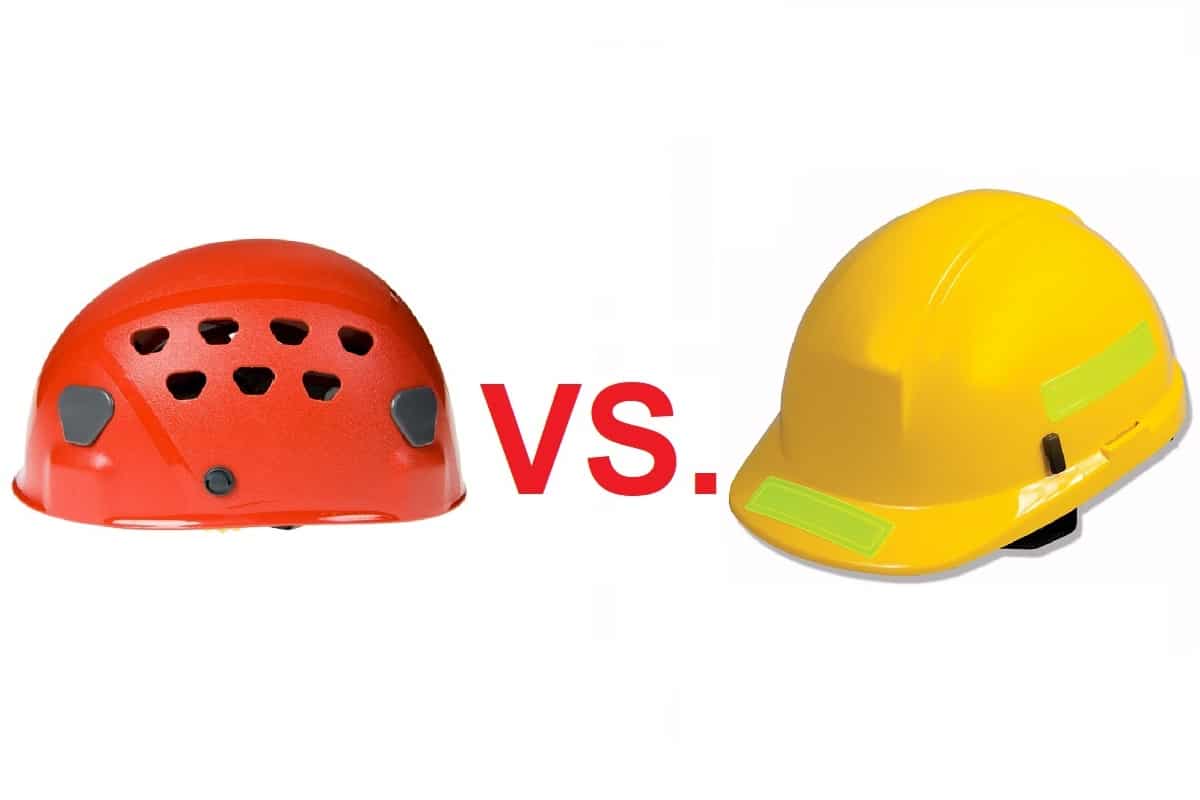The safety helmet is considered a protective device worn by workers to reduce the risk of sudden death or serious injury in case of an accident. There are various types of safety helmets available in the market and it depends on your work environment and the kind of jobs you do to decide what type of safety helmet suits you best. Hard hats fulfill the same or similar purposes. So what’s the difference between them? Find out below.
What Is a Hard Hat?
A hard hat is a helmet worn on the job to prevent both serious and minor head injuries. Such injuries to the head might result from falling objects, debris, bumps, scrapes, or be weather-related. It’s also not uncommon for workers to encounter electrical hazards that can cause serious harm in an accident. Hard hats can even keep workers safe from too much exposure to ultraviolet light.
What Is a Safety Helmet?
What exactly is a safety helmet? The term “safety helmet” encompasses a broad range of head protection, including hard hats. They can be worn in a large variety of work and leisure activities. A safety helmet is one of the strongest types of protective gear and saves many individuals from being seriously harmed in accidents.
Examples of safety helmets:
- Climbing helmets
- Bicycle helmets
- Skateboarding helmets
- Construction helmets (hard hats)
- Mining helmets
- Racecar driver helmets
- Motorcycle helmets

Safety helmets include any type of helmet that protects the head beyond what an ordinary hat or ball cap can provide.
Similarities Between Safety Helmets and Hard Hats
As mentioned above, the term “safety helmet” encompasses a broad range of head protective equipment. Many people use “safety helmets” and “hard hats” interchangeably. Both categories and subcategories of each provide the following protection to wearers:
- Protection from UV rays.
- Protection from penetration and impact.
- Protection from side bumps.
- Protection from scrapes and scratches.
- Protection from burns, fire, and heat.
Full head and face helmets, such as racing helmets, provide superior protection from all impacts and burns in comparison to other types of safety helmets. These are specialized types of safety helmets and also include unique liners for comfort, moisture-wicking, temperature retention, and absorption. Some offer good aerodynamics to the wearer, as in the case of bicycle helmets.
Both Safety helmets and hard hats can include additional components, such as:
- Front-facing headlamps.
- Artistic designs and logos.
- Additional safety straps.
- Removable or fixed brims.
- Removable liners.
- Internal suspension system.
For a well-respected source of safety helmets and hard hats in the UK, check out Volt PPE.
Similar Materials Used In Safety Helmets and Hard Hats
The use of certain types of materials in making safety helmets is a must for bike riders, climbers, car drivers, and construction and industrial workers. By choosing helmets with the right materials, you can be assured that your safety helmet will provide adequate protection to you. A properly made helmet protects your head from serious injuries and provides you with the confidence you need to ride. It is important that you choose a helmet that is both functional and comfortable, which makes it more than worth the money.
The most common materials used in the construction of a safety helmet are polycarbonate and foam. Polycarbonate is the cheapest but is also the easiest to repair or replace if it breaks, while foam has the least amount of density and is the strongest. The three different types of material used for safety helmets include neoprene, polystyrene and polyurethane foam. Of course, the type you buy does not necessarily dictate how strong the helmet is.
When choosing your safety helmet materials, you should consider factors such as impact abrasion resistance, impact absorption, weather resistance, and visual effects. You will want to look for materials that have been tested against various types of hazards, such as levels of penetration or impacts with a flying object. If you are concerned about the visual effect of your helmet, you should look for bright colors that will not distract other workers or drivers on the road.
For more on materials used in hard hats, see our post Types Of Construction Helmets.
Differences Between Safety Helmets and Hard Hats
Hard hats are a subclass of safety helmets and are made to be used primarily in construction and related industries. These include building construction, roadway paving, mining, powerplants, communications lines, utilities, sewage, forestry, and more. There are different types and classes of hard hats, but none are made to be used outside of their fields of use. Safety helmets, on the other hand, include all helmets that protect the head from injury. This includes helmets for sports such as skiing, auto racing, bicycle riding, rock climbing, and so forth. Safety helmets are used in all industries or jobs where injury to the head from impacts, scrapes, or burns is a possibility. Not all safety helmets or hard hats are the same and wearers should only use the helmet that fits the activity they are engaged in.
Hard Hats Must Be ANSI, OSHA, ISEA, or CSA Rated
Bicycle helmets are not safety rated by ANSI, OSHA, ISEA, or CSA to be worn in dangerous work environments where heat, electrical hazards, or falling objects are present. Safety helmets, such as bicycle helmets, or rock climbing helmets do not have to meet these stringent work safety requirements.
For more information, see our post Hard Hat Standards.
Safety helmets and hard hats are definitely some of the strongest types of protective gear and save many individuals from any untoward accident. Even if not required, consider getting and wearing one of these the next time you are in a dangerous work or sporting environment. Your head and spine safety are paramount above all other considerations.

